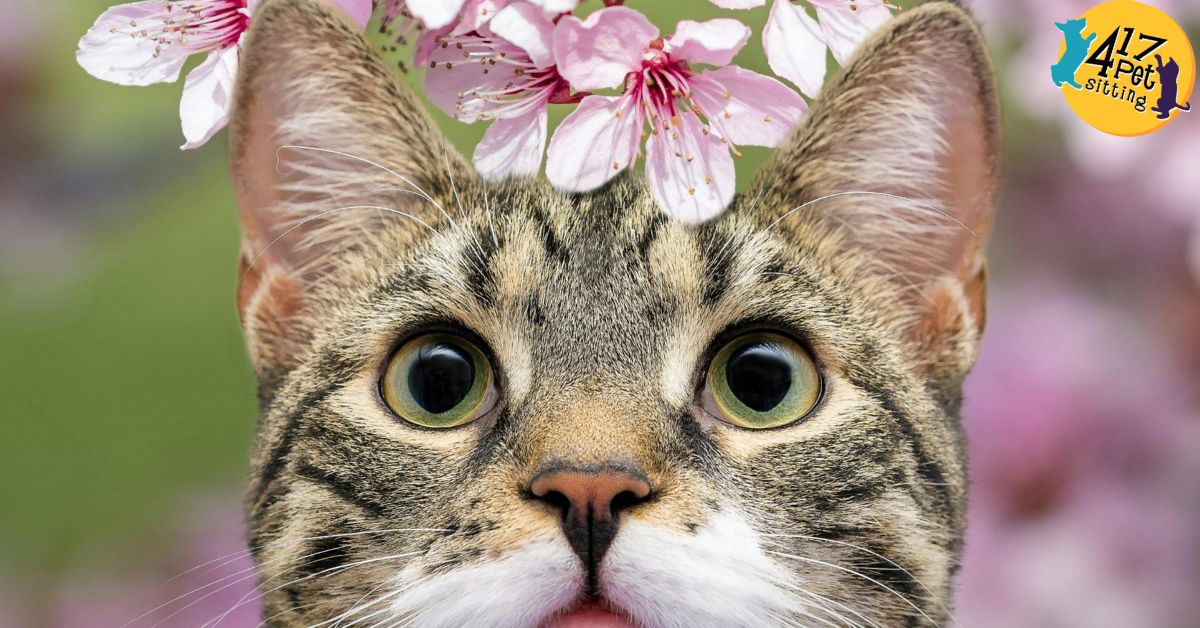Ah, spring—the season of sunshine, blossoms, and… potential pet hazards. While warm weather and blooming landscapes bring joy to us, they also come with risks for our four-legged friends. Whether you’re dealing with lingering winter woes or embracing full-on springtime splendor, staying alert and prepared is the hallmark of a top-tier pet pro.
Weather Watch: It’s Not Just a Walk in the Park
Spring can be unpredictable. One minute it’s sunshine, the next it’s sleet. Always monitor weather patterns and never leave pets outside unsupervised. If winter salts are still on sidewalks, give those paws a rinse—ingesting melting chemicals can be toxic.
As the mercury rises, hydration and shade become non-negotiable. Indoors with A/C is ideal, but if outside, provide a well-ventilated spot with ample water. Don’t forget to move bowls out of direct sun and check for ants or mosquito larvae. And never leave a pet in a car, even with windows cracked—it takes minutes for temperatures to soar to dangerous levels.
Insects: Buzz Off, Danger!
Bees and other stingers love curious snouts. If a pet gets stung, scrape the stinger sideways—don’t pinch, or you might inject more venom. Most pets instinctively rub it out, but if swelling appears, apply a cold pack briefly (frozen peas work great!). If the pet’s having trouble breathing, it’s vet time—stat.
Make sure to stow insect repellents and sunscreens away safely—ingestion can cause serious neurological or gastrointestinal issues.
Grooming & Disease: Don’t Let Spring Catch You Off Guard
Spring isn’t the time for a close shave. That glorious fur actually protects pets from sunburn, heat, and sharp objects. Instead, encourage daily brushing to prevent mats, which trap heat and invite pests.
Flea and tick preventives are musts. So are vaccinations or titers, especially for Parvovirus and Leptospirosis, which thrive in warm, damp areas. And if you haven’t thought about heartworm, please do. Prevention is cheaper than treating this silent killer, which can cause coughing, fluid buildup, and even death if ignored.
Plants & Flowers: Beautiful & Deadly
Your garden may be blooming, but don’t assume it’s pet-safe.
Here are toxic plants and flowers common to gardens:
- Azaleas
- Daffodils
- Tulips
- Hyacinths
- Lilies
- Oleander (even the smoke is toxic)
- Rhododendron
- Amaryllis
- Foxglove
- Lily of the Valley
Fertilizers, Pesticides & DIY Safety
“Organic” doesn’t mean “safe for pets.” Blood meal smells delicious to dogs but can contain iron, leading to poisoning. Bone meal can harden into a stomach-blocking mass. And chemical weed killers? They’re toxic across the board.
Try this pet-safe weed killer instead:
- 1 gallon white vinegar
- 2 cups Epsom salts
- ¼ cup original blue Dawn® dish soap
Spray after the morning dew dries. By dinner, the weeds wave the white flag.
Final Pro Tips for Pet Pros
- Keep insecticides, cleaners, and fertilizers locked away.
- Check outdoor bowls regularly—avoid mosquito breeding and unintentional bird baths.
- Know your local animal ER—hours, location, and payment policies.
- Bookmark the ASPCA Poison Control Hotline: 888-426-4435.
- Brush up regularly on pet first aid—it’s a skillset that saves lives.

